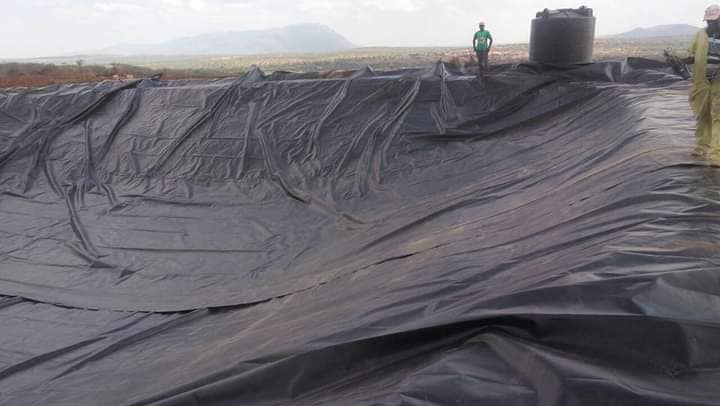Introduction
Aquaculture demands a robust water containment system to ensure optimal growing conditions for aquatic life. Dam liners are a fundamental component in this setup, offering a cost-effective and efficient solution for water retention. Among the various gauges available, the 0.75 mm dam liner has become a popular choice due to its balanced features. But how does it compare to other gauges like 0.5 mm, 1 mm, and beyond? In this detailed guide, we’ll explore the differences, applications, and benefits of each liner thickness, with a particular focus on the 0.75 mm option.
Understanding Dam Liners and Their Importance
Dam liners are impermeable membranes designed to prevent water seepage in ponds, tanks, and reservoirs. They play a vital role in aquaculture by maintaining water quality, conserving resources, and reducing maintenance costs.
Key considerations when choosing a dam liner include:
- Durability: Ability to withstand environmental and operational stresses.
- Flexibility: Ease of installation and adaptability to uneven surfaces.
- Resistance to UV and chemicals: Essential for prolonged outdoor use and exposure to fertilizers or fish waste.
0.75 mm Dam Liners: An Overview
The 0.75 mm dam liner strikes a balance between durability and cost, making it a versatile choice for aquaculture and other applications. Made from materials like high-density polyethylene (HDPE), low-density polyethylene (LDPE), or PVC, this thickness is designed for medium-duty applications.
Advantages of 0.75 mm Dam Liners
- Durability:
- Offers excellent resistance to punctures and tears compared to thinner liners (e.g., 0.5 mm).
- Suitable for ponds with moderate to high water pressure.
- Ease of Installation:
- Light enough for manual handling, reducing installation time and labor costs.
- Flexible enough to conform to irregular surfaces.
- Cost-Effectiveness:
- Cheaper than thicker alternatives like 1 mm or 1.5 mm liners while providing adequate strength for most aquaculture setups.
- Environmental Resistance:
- UV stabilized to prevent degradation under prolonged sunlight exposure.
- Resists chemical damage, ensuring long-lasting performance in aquaculture environments.
Comparison with Other Gauges
0.5 mm Dam Liners
Pros:
- Lightweight and affordable, ideal for temporary or small-scale projects.
- Easier to fold and transport.
Cons:
- Lower durability, prone to punctures, especially in rocky or abrasive terrains.
- Limited lifespan, requiring more frequent replacements.
Applications:
- Short-term water containment.
- Low-pressure systems or decorative ponds.
1 mm Dam Liners
Pros:
- Increased strength and durability, suitable for larger aquaculture projects.
- Better resistance to punctures and environmental stress.
Cons:
- Higher cost and weight, making installation more labor-intensive.
- Less flexible than thinner options, challenging for uneven terrains.
Applications:
- Large-scale fish farming ponds.
- Industrial reservoirs and water treatment facilities.
1.5 mm Dam Liners and Beyond
Pros:
- Exceptional durability, capable of withstanding extreme conditions.
- Ideal for long-term projects and heavy-duty applications.
Cons:
- Expensive and heavy, requiring specialized equipment for installation.
- Overkill for small to medium aquaculture setups.
Applications:
- Mining tailing ponds.
- Large-scale irrigation systems.
How to Choose the Right Gauge for Your Project
When selecting a dam liner, consider the following:
- Project Size: Thicker liners are better for larger ponds with higher water pressure.
- Budget: Balance upfront costs with long-term durability to ensure value for money.
- Environmental Conditions: Assess UV exposure, chemical usage, and terrain type.
- Type of Aquaculture: Some species may require specific water quality or pond features.
Popular Materials for Dam Liners
- HDPE (High-Density Polyethylene): Highly durable and UV-resistant. Ideal for aquaculture.
- PVC (Polyvinyl Chloride): Flexible and cost-effective but less resistant to chemicals.
- LDPE (Low-Density Polyethylene): Lightweight and easy to handle, suitable for small projects.
The Role of 0.75 mm Liners in Aquaculture Success
For fish farmers, water quality and containment are paramount. The 0.75 mm dam liner supports these goals by:
- Preventing seepage, ensuring stable water levels.
- Offering a clean surface for easy maintenance.
- Reducing the risk of contamination from soil or groundwater.
Case Study: A tilapia farm in Kenya reduced water loss by 40% and increased productivity by 30% after switching to 0.75 mm HDPE liners from traditional clay-lined ponds.
External Resources for Further Reading
- Aquaculture Stewardship Council: Comprehensive guidelines on sustainable aquaculture practices.
- The World Aquaculture Society: Research and resources on innovations in aquaculture.
- Plastic Liner Materials Guide: EPA’s overview of plastic liners for environmental projects.
Installation Tips for 0.75 mm Dam Liners
- Prepare the Base: Remove sharp objects and level the surface.
- Anchor Properly: Use trenches or weights to secure the liner edges.
- Allow Expansion: Leave room for thermal expansion, especially in hot climates.
- Regular Maintenance: Inspect for damage periodically to extend the liner’s lifespan.
Ready to elevate your aquaculture project with the right dam liner? Choose our premium 0.75 mm HDPE liners for a durable and cost-effective solution. Contact us today for expert advice, competitive pricing, and fast delivery!
By understanding the advantages and limitations of each liner gauge, aquaculture enthusiasts and professionals can make informed decisions. The 0.75 mm dam liner, with its versatility and affordability, offers a practical solution for most medium-scale projects. Whether you’re farming tilapia, shrimp, or ornamental fish, this liner can help you achieve optimal results while minimizing costs.
Originally posted 2024-12-07 14:50:10.

